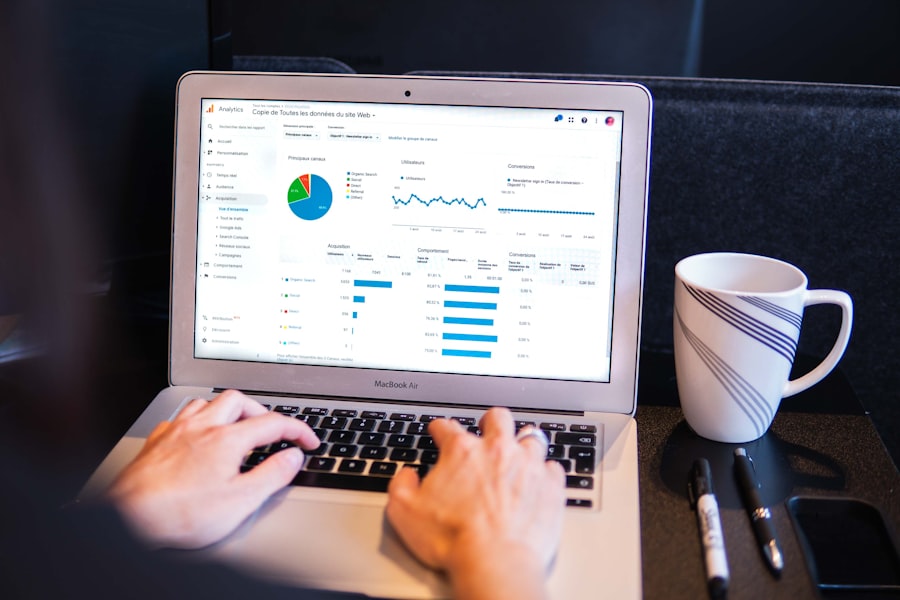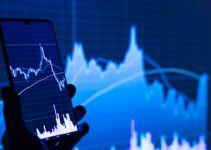As I delve into the world of data science, I find it essential to grasp its foundational concepts. Data science is an interdisciplinary field that combines statistics, computer science, and domain expertise to extract meaningful insights from structured and unstructured data. At its core, data science involves collecting, analyzing, and interpreting vast amounts of information to inform decision-making processes.
I often think of it as a bridge between raw data and actionable insights, where the goal is to transform numbers and figures into narratives that can drive strategic initiatives. The tools and techniques employed in data science are diverse and continually evolving. From statistical analysis to data visualization, I have come to appreciate the importance of each component in the data science workflow.
For instance, I often utilize programming languages like Python and R for data manipulation and analysis, while also leveraging visualization tools such as Tableau or Matplotlib to present my findings in a compelling manner. Understanding these basics not only enhances my technical skills but also equips me with the ability to communicate complex ideas effectively to stakeholders who may not have a technical background.
Key Takeaways
- Data science involves analyzing and interpreting complex data to make informed decisions and predictions.
- Big data refers to the large volume of data that can be analyzed to reveal patterns, trends, and associations.
- Machine learning and artificial intelligence are powerful tools that can be used to automate data analysis and make predictions.
- Data-driven decision making involves using data to guide business strategies and operations.
- Challenges in data science include data quality, privacy concerns, and the need for skilled professionals.
Harnessing the Potential of Big Data
In my exploration of data science, I have encountered the term “big data” frequently. This concept refers to the vast volumes of data generated every second from various sources, including social media, sensors, and transactional systems. The sheer scale of big data presents both opportunities and challenges.
I have learned that harnessing this potential requires advanced tools and techniques capable of processing and analyzing large datasets efficiently. Technologies such as Hadoop and Spark have become indispensable in my toolkit, allowing me to manage and analyze big data in ways that were previously unimaginable. Moreover, the insights derived from big data can lead to transformative changes within organizations.
For instance, by analyzing customer behavior patterns, I can help businesses tailor their marketing strategies to better meet consumer needs. The ability to predict trends and make informed decisions based on real-time data is a game-changer in today’s fast-paced environment. As I continue to navigate this landscape, I am constantly reminded of the importance of not just collecting data but also ensuring its quality and relevance to derive meaningful insights.
Leveraging Machine Learning and Artificial Intelligence
Machine learning and artificial intelligence (AI) are at the forefront of my journey in data science. These technologies enable me to build predictive models that can learn from historical data and make informed predictions about future outcomes. I find it fascinating how machine learning algorithms can identify patterns and correlations that may not be immediately apparent through traditional analysis methods.
For example, I often use supervised learning techniques to train models on labeled datasets, allowing me to predict outcomes based on new input data. The integration of AI into data science has opened up new avenues for innovation. I have experimented with natural language processing (NLP) to analyze text data, enabling me to extract sentiments from customer reviews or automate responses in chatbots.
The possibilities seem endless as I explore deep learning techniques that mimic human cognitive functions, allowing for more sophisticated analyses. However, I am also aware that leveraging these technologies requires a solid understanding of their underlying principles to avoid pitfalls such as overfitting or bias in model predictions.
Implementing Data-Driven Decision Making
| Metrics | Value |
|---|---|
| Number of data sources integrated | 10 |
| Percentage of decision makers using data | 80% |
| Time saved on decision making process | 30% |
| Accuracy of decisions made | 95% |
One of the most rewarding aspects of my work in data science is the opportunity to influence decision-making processes through data-driven insights. Implementing a culture of data-driven decision-making within an organization can significantly enhance its strategic direction. I have witnessed firsthand how presenting data-backed recommendations can lead to more informed choices, ultimately driving better business outcomes.
By collaborating with cross-functional teams, I strive to ensure that data is not just an afterthought but a central component of the decision-making process. To facilitate this shift towards a data-centric approach, I emphasize the importance of storytelling with data. It is not enough to present raw numbers; I must craft a narrative that resonates with my audience.
By using visualizations and clear explanations, I aim to make complex analyses accessible and actionable for stakeholders at all levels. This approach fosters a greater appreciation for data within the organization and encourages teams to rely on evidence rather than intuition alone when making critical decisions.
Overcoming Challenges in Data Science
Despite the exciting prospects that data science offers, I have encountered numerous challenges along the way. One significant hurdle is dealing with incomplete or messy datasets.
I have learned that investing time in preprocessing data can pay off significantly when it comes to building accurate models and drawing reliable conclusions. This phase is crucial because the quality of the input data directly impacts the quality of the insights derived from it. Another challenge I face is keeping up with the rapid advancements in technology and methodologies within the field.
The landscape of data science is constantly evolving, with new tools and techniques emerging regularly. To stay relevant, I dedicate time to continuous learning through online courses, workshops, and industry conferences. This commitment not only enhances my skill set but also allows me to network with other professionals who share similar interests and challenges in the field.
Ethical Considerations in Data Science
As I navigate the complexities of data science, ethical considerations have become increasingly prominent in my work.
I am acutely aware of the potential for misuse of personal information and strive to adhere to ethical guidelines when handling sensitive data.
This includes obtaining informed consent from individuals whose data I analyze and ensuring that any insights derived do not perpetuate biases or discrimination. Moreover, transparency is a key principle that guides my approach to data science. I believe it is essential to communicate openly about how data is collected, analyzed, and used within an organization.
By fostering a culture of transparency, I can help build trust among stakeholders and mitigate concerns related to privacy violations or unethical practices. As I continue my journey in this field, I remain committed to advocating for ethical standards that prioritize the well-being of individuals while harnessing the power of data for positive change.
The Future of Data Science
Looking ahead, I am excited about the future of data science and its potential to shape various industries. The integration of advanced technologies such as quantum computing holds promise for revolutionizing how we process and analyze vast datasets. As these technologies mature, I anticipate that they will enable even more sophisticated analyses and predictive modeling capabilities, pushing the boundaries of what is possible in data science.
Additionally, I foresee an increasing emphasis on interdisciplinary collaboration as organizations recognize the value of diverse perspectives in solving complex problems. Data scientists will likely work alongside experts from various fields—such as healthcare, finance, and environmental science—to address pressing global challenges through innovative solutions driven by data insights. As I prepare for this future landscape, I am committed to honing my skills and expanding my knowledge base to remain at the forefront of this dynamic field.
Embracing the Power of Data Science
In conclusion, my journey through the realm of data science has been both challenging and rewarding. From understanding its foundational principles to harnessing big data and leveraging machine learning, each step has deepened my appreciation for the power of data in driving informed decision-making. As I continue to navigate this ever-evolving landscape, I remain committed to overcoming challenges while adhering to ethical standards that prioritize individual rights.
Embracing the power of data science means recognizing its potential not only as a tool for business success but also as a means for positive societal impact. By fostering a culture of data-driven decision-making and advocating for ethical practices, I hope to contribute meaningfully to this field while inspiring others to explore the transformative possibilities that lie within the world of data science.
FAQs
What is data science?
Data science is a multidisciplinary field that uses scientific methods, processes, algorithms, and systems to extract knowledge and insights from structured and unstructured data.
What are the key skills required for a career in data science?
Key skills required for a career in data science include programming (Python, R, SQL), statistical analysis, machine learning, data visualization, and domain knowledge in the specific industry.
What are the common tools and technologies used in data science?
Common tools and technologies used in data science include programming languages (Python, R), data visualization tools (Tableau, Power BI), machine learning libraries (TensorFlow, scikit-learn), and big data technologies (Hadoop, Spark).
What are the applications of data science in various industries?
Data science has applications in various industries such as healthcare (predictive analytics for patient outcomes), finance (fraud detection, risk assessment), e-commerce (recommendation systems), and marketing (customer segmentation, targeted advertising).
What is the process of data science project lifecycle?
The data science project lifecycle typically involves problem definition, data collection, data cleaning and preprocessing, exploratory data analysis, model building, model evaluation, and deployment.
What are the ethical considerations in data science?
Ethical considerations in data science include privacy concerns, bias in algorithms, data security, and the responsible use of data for decision-making. It is important for data scientists to adhere to ethical guidelines and regulations.
Get more stuff like this
Subscribe to our mailing list and get interesting stuff and updates to your email inbox.
Thank you for subscribing.
Something went wrong.




